I decided to start to learn more about my new home country before I moved to Croatia. And every time I start researching, I get so fascinated by what I find. Unknown to many people, Croatia has a rich history and culture.
Proof of that can be found in the items which are located on the UNESCO Intangible Cultural Heritage List. UNESCO established a list to ensure better protection of the critical cultural heritage around the globe.
The UNESCO Intangible Cultural Heritage List is made up of intangible heritage elements that require urgent safeguarding. The UNESCO committee has so far inscribed over 35 elements globally.
The list comprises worldwide, and I was delighted to find that Croatia’s rich culture has 17 cultural masterpieces on the list. All in addition to the ten sites inscribed on the World Heritage List. That’s the second-highest for European countries, behind Spain, which holds 18. Go Croatia!
Safeguarding the time-honored traditions are of great importance for Croatian culture. Those inscribed on the UNESCO list are:
Skip Ahead To My Advice Here!
1. Ojkanje Singing
Ojkanje Singing is the traditional singing from the Dalmatian hinterland in Croatia. Included on the list in 2010, this singing is performed by at least two people who sing using a very distinct voice-shaking technique created by the throat.
I first heard this singing in Sinj a few months ago and was captivated listening to the artists. Each song lasts as long as the lead singer can hold his or her breath.
Song themes range from social issues, politics, and love – not much different from today’s music, really. The survival of the Ojkanje singing is in part due to local groups who perform at festivals and the tradition being passed down to younger generations.
2. Lacemaking In Croatia
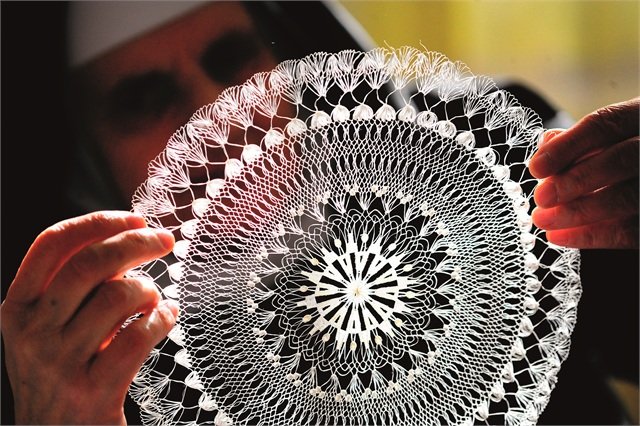
Lacemaking in Croatia began during the Renaissance period, when it spread throughout Europe and the Mediterranean. Croatian’s used lace initially to make ecclesiastical garments or ornaments for clothing and tablecloths. Recognized as an essential part of the Croatian culture, it was inscribed by UNESCO to the list in 2009.
Lacemaking traditions are a deep part of the Croatian Culture, and lace has increased in popularity over the years, thanks to some unique patterns and designs. The process of lacemaking involves embellishing a spider web pattern with geometrical motifs. It is often taught by an older woman who offers a 12-month long course to learn the complicated techniques.
Those interested in learning about lace may want to visit the beautiful International Lace Festival celebrated in Lepoglava in northern Croatia or on the Adriatic Island of Hvar, where lace is made of aloe leaves exclusively created by the Benedictine nuns. The International Lace festival on Pag Island is now in its 6th year and includes a lacemaking workshop.
For a long time, rural women have created lace as a source of income, and you can still find women in villages creating masterpieces that are for sale.
3. Sinjska Alka. A Knights’ Tournament In Sinj
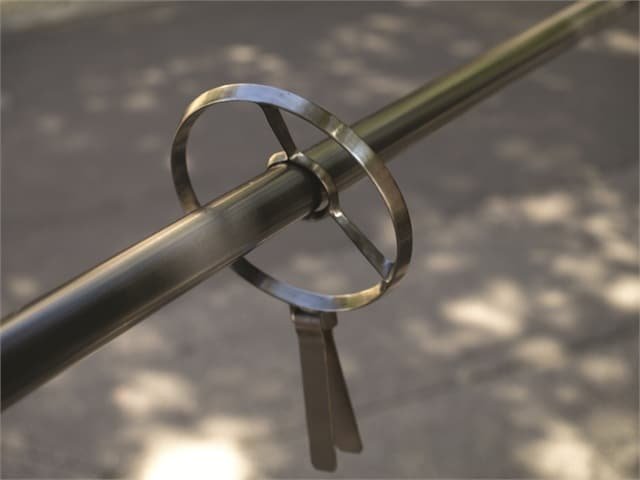
Beginning in 1715, the town of Sinj holds a unique annual equestrian event. Held on the first Sunday of August, the event consists of an equestrian competition where suited horsemen knights gallop at full speed, armed with a lance to attempt to secure a metal ring called the ‘Alka,’ which is suspended several meters from the ground.
We were invited to this Croatian Culture spectacular this year and can’t wait to visit again next year.
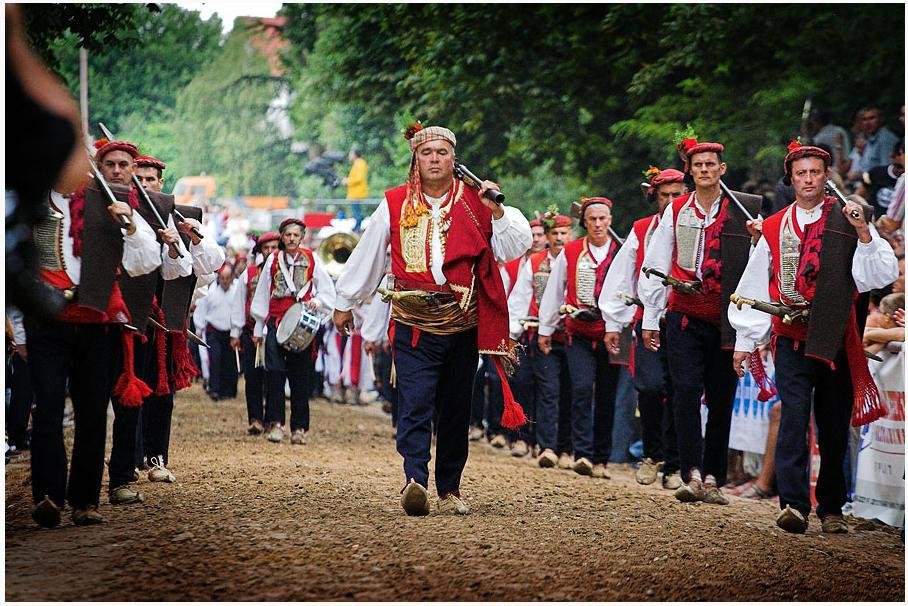
The entire community supports the knights selected from the local Alka club for this event. Preparations for the event and restoration of the equipment, clothing, and accessories are all carried out by proud locals.
The Sinjiska Alka is one of the only remaining examples of medieval competitions held in Croatia until the 19th century. Inscribed on UNESCO’s list in 2010, the Alka competition has become an essential part of local history.
4. Following The Cross On The Island Of Hvar
In 2009, the procession, which takes place on Hvar Island before Easter each year, was entered onto the list. Known as the Procession Za Krizen in Croatian, following the cross is a massive event on the Croatian culture calendar.
The 500-year-old tradition begins simultaneously at 1opm on Holy Thursday (Maundy Thursday) in six villages; Vrbanj, Pitve, Svirce, Virsnik, Jelsa, and Vrboska on the Island of Hvar. Led by the barefoot cross-bearers, the processions continue to 7 am, where the cross-bearers and following members of the community return to their respective starting points.
Members of the procession are chosen approximately 20 years in advance by the form of registration. The cross-bearer, who carries the 18kg cross, is followed by two friends and those carrying candles and lanterns, as well as five choral singers.
5. Zvončar: Annual Carnival Bell Ringers’ Pageant From Kastav
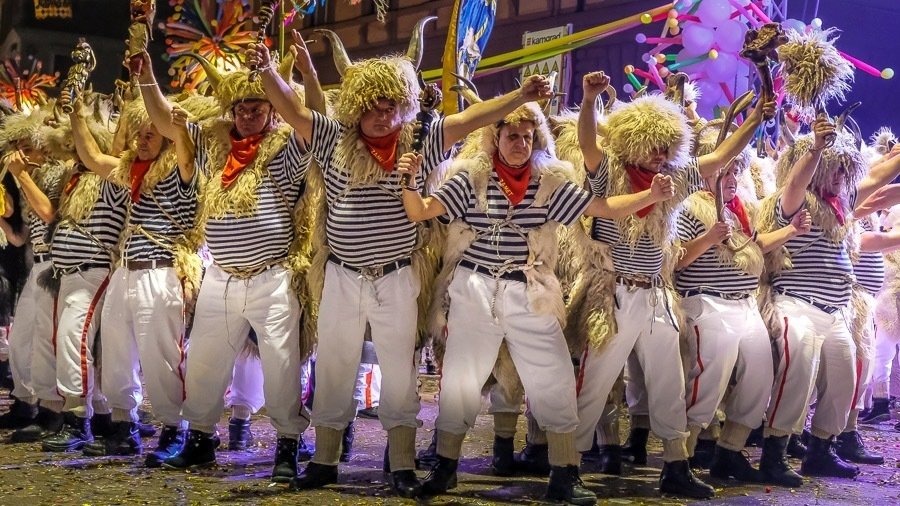
This Croatian custom which is practiced in the Kastav region of northwest Croatia was added to the UNESCO Intangible Cultural Heritage list in 2009. Beginning in January through to Ash Wednesday, groups of between 2-10 men march from village to village dressed in sheepskin throws turned inside-out & bells, after which the ringers were named.
Often fuelled by wine the bell ringers are from Bregi, Brgud, Halubje, Mučići, Mune, Rukavac, Zvoneća, Žejane, Frlanija, Vlahov Breg, Korensko.
Sounds from the bell are made by various motions of their bodies, which requires skill and much physical endurance. Began as a way to invite growth and fertility at the end of winter for the upcoming spring, the marchers create such extraordinary music and a bond throughout the villages by which they pass.
6. Nijemo Kolo. Silent Circle Dance Of The Dalmatian Hinterland
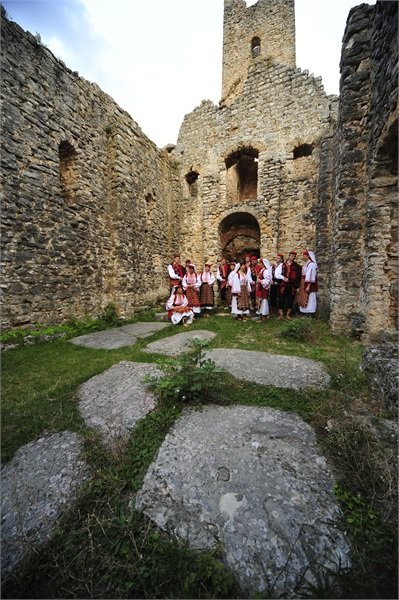
The Nijemo Kolo is a silent dance that originated from the Dalmatian hinterland in Southern Croatia. Included on the UNESCO list in 2011, the dance is performed in a closed circle with men leading their female counterparts in quick and unplanned steps. Unlike most dancing, the Kolo is performed without any music.
Although you can still find the spontaneous performances of the Kolo, today, you’ll find most of the Nijemo Kolo dancers performing at local shows, international festivals, and carnivals with a routine. Villagers have recently added choreography to keep the distinction between each village and as a way to protect the tradition.
7. Traditional Manufacturing Of Children’S Wooden Toys In Hrvatsko Zagorje
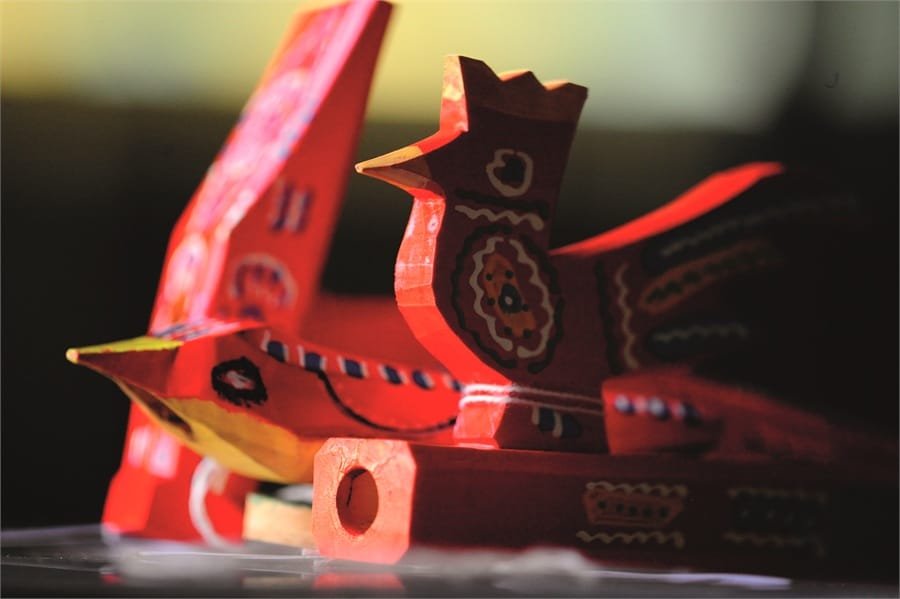
The technique of wooden manufacturing toys began across different communities in the Hrvatsko Zagorje region, north of Croatia, a century ago. The marvelous toys include whistles, cars, spinning dancers, small doll furniture, flapping birds, and jumping horses.
Sold in fairs and markets across the country, the wooden creations have become popular with locals and tourists. You can even find the wooden pieces of art being exported internationally.
Made by men in each village using dried willow, lime, beech, and maple wood, local women decorated the toys with bright colored paint. Toy manufacturing became protected by the UNESCO list in 2009, with the techniques being passed from one generation to the next.
8. Becarac Singing And Playing From Eastern Croatia
Becarac is a humorous type of folk song. Possessing a powerful voice, the singer performs at village parties in eastern Croatia; Slavonia, Srijem, and Baranja. Through song, the singers convey the community’s values and enable singers to express their own thoughts and feelings.
Added to UNESCO’s list in 2011, the performances last as long as the singers’ creativity and energy can last.
9. Festivity Of Saint Blaise, The Patron Of Dubrovnik
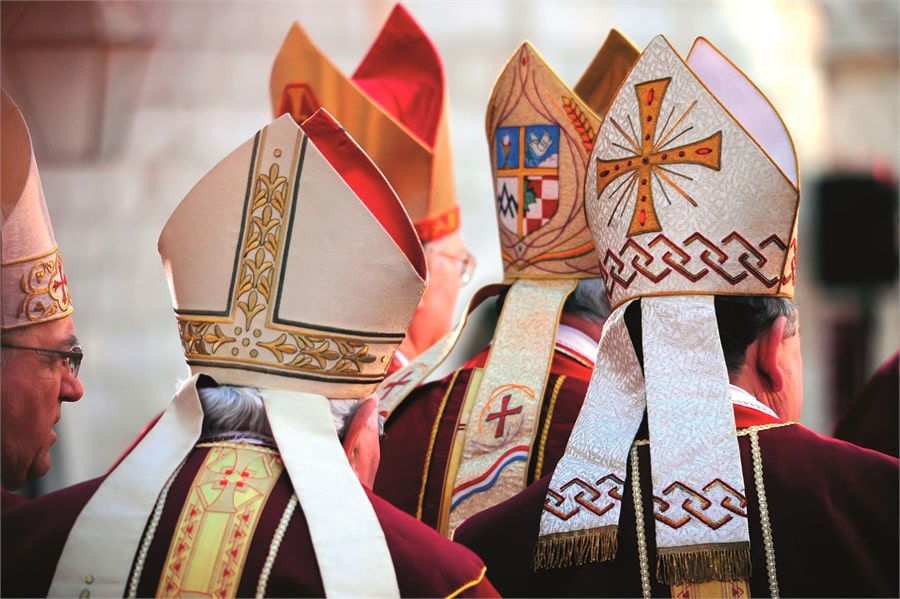
This is one of Dubrovnik’s most important events and was inscribed in 2009 as one of Eastern Europe’s examples of cultural heritage by UNESCO. It was added to the list because of its uniqueness, importance to culture, and endurance over the years. This festival honors the city’s patron saint and has continued for a thousand years in Dubrovnik.
The festival combines a celebration of St. Blaise through a ritual of blessings and prayers for the coming year and a parade of traditional songs and dances. The festival, which attracts both locals and international tourists, showcases folk costumes and traditional foods.
10. Gingerbread Making From Northern Croatia
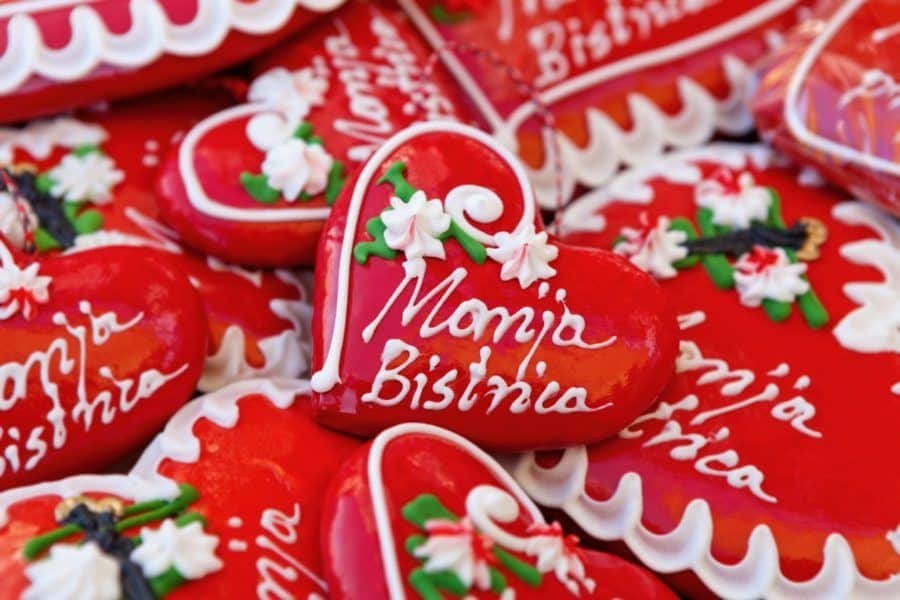
In the Middle Ages, gingerbread cakes made in wooden molds were produced by many European monasteries; this craftsmanship reached a different level in Northern Croatia. The gingerbread in Croatia, called Licitars, was included on the list in 2010.
The process of making licitars requires great skill. A standard recipe of sugar, flour, water, and baking powder is used for all. Still, the gingerbread is shaped, baked, dried, painted, and decorated with edible colors in a never-ending amount of varieties.
Today gingerbread has become one of the most recognizable symbols of Croatian identity, especially in Zagreb.
11. Spring Procession Of Ljelje/Kraljice (Queens) From Gorjani
Performed in spring by the young girls from Gorjani, located in Slavonia, northeast Croatia, the sweet young girls sing from house to house in a procession. Included onto the UNESCO list in 2009, the original reasons for this procession are largely unknown; now, the local villagers view it as a beautiful showcase of the Croatian culture and the beauty and elegance of their children.
12. Klapa Multipart Singing Of Dalmatia, Southern Croatia
This traditional multipart singing is performed in Dalmatia in Southern Croatia. Each singing group is lead by the first tenor, followed by several tenori, bartoni, and basi voices. Joining the list in 2012, the songs’ topics usually revolve around life, the local environment, and of course, love.
13. Mediterranean Diet
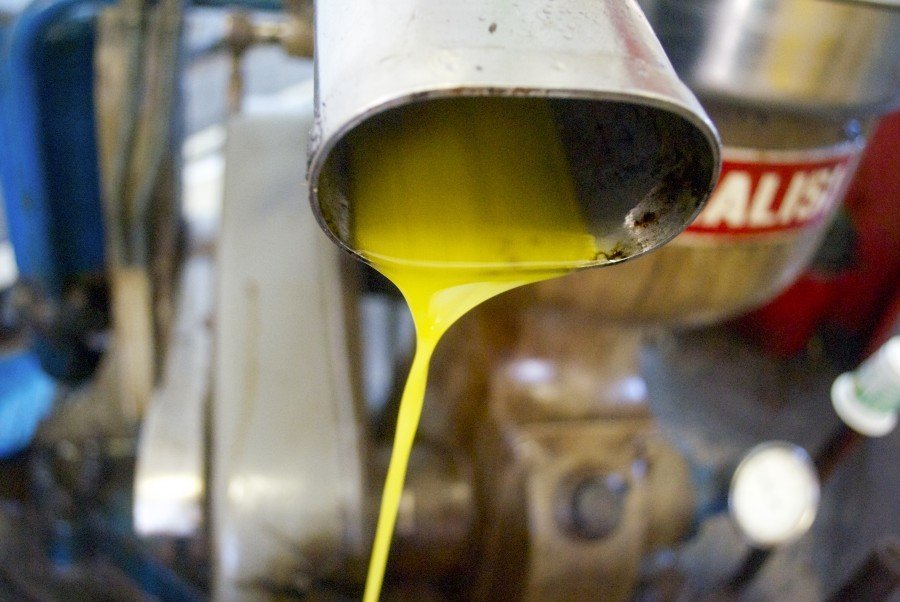
The Mediterranean diet of Croatia was included on the UNESCO list in 2013. UNESCO describes this inclusion onto the list as necessary. It involves a set of skills, knowledge, rituals, symbols, and traditions concerning crops, harvesting, fishing, animal husbandry, conservation, processing, cooking, and particularly the sharing and consumption of food.
While not unique to Croatia, the Mediterranean diet is unique and an important part of the Croatian culture.
14. Two-Part Singing And Playing In The Istrian Scale
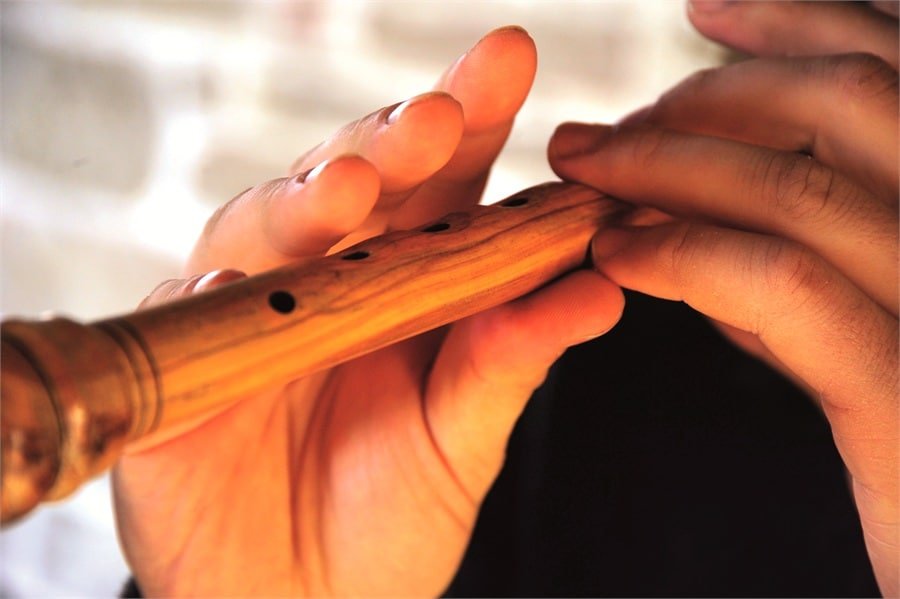
This complex style of singing and playing of folk music. The style is characterized by vigorous, partly nasal singing and the sounds from musical instruments.
For more in-depth reading on each one, visit the UNESCO website, where they have great photos and videos that are genuinely fascinating.
Brands We Use And Trust
Move This Adventure To Your Inbox & Get An Instant Freebie

No spam. Unsubscribe at any time.
15. Batana Ecomuseum. Community Project Of Safeguarding The Living Culture Of Rovinj
In 2016 this project received entry on the Register of Good Safeguarding Practices. The Batana Eco-museum was created to train and educate the public about an important piece of maritime heritage – the batana.
The batana is a traditional fishing boat in Rovinj, and the craftsmanship knowledge has been handed down through generations by family teaching. With the increase in newer boat traffic, the batana popularity decreased significantly, leading to the community organization of the museum.
At the ecomuseum, one can learn the history and use of the batana, shipbuilders can attend construction workshops, and boats can be brought into the yard for repair. Younger generations are strongly encouraged to become involved in the various festivals and activities hosted by the museum.
16. Art Of Dry Stonewalling, Knowledge & Techniques
Added in 2018, this building technique uses dry stones to create structures without the use of additional materials. In some cases, dry soil is added for stability. The stones are stacked in such a precise way that the buildings withstand the test of time.
Used in ancient days all the way to the present, this method is noted for being harmonious with nature by using natural elements in the environment while also assisting human needs such as preventing landslides, floods, avalanches, and in combating erosion of the land.
Dry stone structures can be found throughout many rural areas but sometimes appear in urban settings as well.
17. Međimurska Popevka. A Folksong From Međimurje
Međimurje, in the northwestern region of Croatia, is where this historic music genre originated. Traditionally, women soloists performed the folksong, each bringing her own personal expression to the lyrics. Over time, Popevka elements started to make their way into other local music about love, sadness, and religion, highlighting how influential the the lyrics were (and still are) to the region.
The Popevka is performed at important family and community events, such as weddings, festivals, religious gatherings, and holidays. Today, there are about 50 masters of the art, and while traditionally the song was performed by women, both men and women sing it today in various forms (with instruments, alongside dance, as solos, etc.).
Have you ever experienced any of these important Croatian culture festivals, music, or products on UNESCO’s Intangible Cultural Heritage list?


This was all very interesting and fascinating! I didn’t even know there was such a UNESCO intangible cultural heritage items. Now, I want to find more about it. The lace is fascinating and I loved watching those videos of music. Now, I know two of my souvenirs when I get to Croatia – lace and gingerbread cookies.
I had no idea either about this list until I moved to Croatia. Take a look at the list, you’ll be surprised what is on there. And yes, you’ll find loads of lovely lace here in Croatia.
Amazing post. Often we focus on what’s tangible and forget this kind of immaterial wealth. I remember visiting Romania and being amazed at a kind of traditional singing called ‘sezatoare’, and since then I’ve tried to discover immaterial traditions everywhere I go.
Oh then you should check out the UNESCO list for sure – there are so many interesting items on the list and it grows yearly.
Incredible talent and pageantry – SJ every post makes me yearn to see Croatia for myself
SUMMER 2015?
What a great idea for a post. I love the lace – simply because I’m sure I’d never have the patience or skill to do it myself.
Ohhh I hear you Polly, no chance I could sit still for the many hours just a small one would take.
What an incredible list of the magnificent cultural offering of Croatia. When I go on vacation as much as I love to explore nature and the physical beauty of a spot, one of my real passions is the “intangible” culture. I did not know about the singing for example and would love lvoe to attend an event to hear it in person.
There is so much of Croatia that can be discovered
Thank you for hosting the linkup !
During the summer lots of towns have festivals so there is plenty of opportunity to see it live in person.
I love that UNESCO included the Croatian diet in there! That lace looks lovely, as does the gingerbread cookies. ;)
The diet one threw me for a 6 – but I guess, we all gotta eat huh!!???
Wow, that lace is amazing! This post makes me want to come back there and stay for months so I could experience some of this for myself. You better a room for “travel crashers” in that dream house. ;) Haha
Ahh yes, we have 5 bedrooms in the making. I am sure we can squeeze in a free-loading travel blogger
Thanks for sharing these cultural aspects of Croatia! I love hearing about different cultures, and I am so interested in the cultures of Europe. It’s such a small continent, and while many of the cultures have their similarities, they are all distinct. Lovely photos!
My pleasure, this was so fun. As soon as I stared reading about it, I knew I had to blog about it. It was far too interesting not to share.
SJ – As a kid I wanted to become an anthropologist. I’ve always been interested in the unique customs and traditions. I’m glad UNESCO is recognizing them. However, as I try to delve into a culture I often find it very hard to find these events. Any hints? For example, I’d love to fly down for the bell ringing processions. Is there a calendar of events or website that will list where to go? Great article!
It’s never too late to become one my love! I can’t find any information on when exactly it takes place. But as it gets closer to the time I’d be delighted to ask the local tourist board for you and get the information if you wanted to try to fly over.
Amazing, it makes me wish to visit Croatia to explore its culture! Didn’t know that there was a UNESCO list for intangible cultural heritage… so interesting, I’ll check it! Thanks for sharing!
You are so welcome. Take a peek at the list, you’ll get great delight in seeing all of the worlds gifts.
I really hope flights to Croatia are within our budget when we look to book a Europe trip for next spring. I am constantly reading your blog for more ideas and insights into exploring Croatia!
In spring all of the cheaper airlines start to fly again, so you should be able to get a bargain. Wait till after mid May and the coastal towns all open back up again.
I think the Gingerbread Cakes was one of the first things I read about in Chasing the Donkey. Those cakes and the lace are things I would want to bring home with me if I were to visit Croatia. That Sinjska Alksa would also be so fascinating to watch. I am amazed that the waiting list to be part of that procession with the cross is 20 years long. It must be quite an honor to partake in it.
I know!I was gobsmacked when my relatives told me about the waiting time o carry the cross – makes it so much more of an honour!
I love learning about cultures from different places around the world. Thank you for sharing about Croatian culture! (I love those little toys.) I’m a botanist, but I focus on the cultural importance and uses of plants so learning about the wood to make those toys was really interesting!
So glad that you liked it Elizabeth. I am off to see how these toys are made next week, so stay tuned for more info :)
Who knew that there was such a thing as an intangible heritage? I actually had to google the word, SJ. An untouchable, invisible and abstract heritage sounds almost like an oxymoron, but considering that singing, dancing, weaving and even baking can be part of a cultural heritage, it actually makes sense. To be honest, the singing is probably my least favorite part, but the spider web resembling lace-making and the knights tournament would certainly be something I would like to check out when next time in Croatia… :)
I can’t believe I never knew about the intangible cultural heritage list – what an awesome idea. And way to go Croatia – I’m jealous that you live in the middle of all that!
I haven’t experienced any of these, but there are some similarities here in Bulgaria. The Carnival of Bell Ringers’ Pageant, for instance, looks like our Kukeri tradition. Men dress up in scary costumes and chase away the evil spirits.
Interesting Intangible Cultural Heritage in Croatia. I’m really interested in cultural heritage lately and this is just precious :) Thanks and greetings from Bulgaria!
Greetings back at you Maria. When I stumbled upon this list I was fascinated stayed up late reading all about them. I aim to try get to see / experience as many as possible. I hope you can do the same from Bulgaria.
Lovely to see that UNESCO has an Intangible Cultural Heritage list and that my mother’s country is featured. One day I’ll get there…